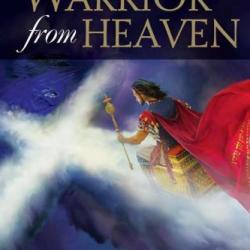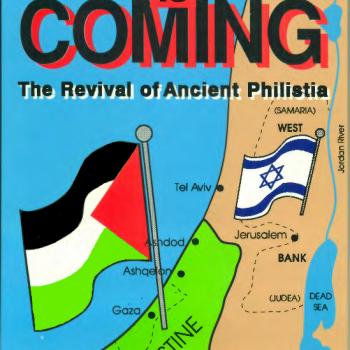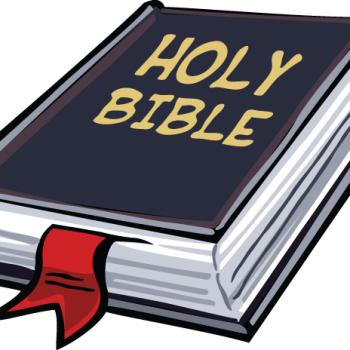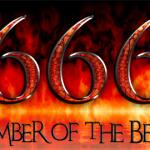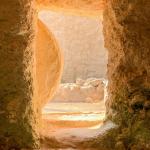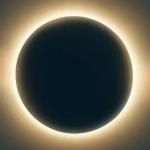Jack Wellman is a patheos blogger, and the title of his blog is Christian Crier. Jack is also the pastor of Mulvane Brethren Church in Mulvane, Kansas, which belongs to an anabaptist Brethren denomination that reaches back 300 years into Germany and thus during tje Protestant Reformation when anabaptists suffered persecution from leading Reformers mostly for their stand against infant baptism.
Today, Jack published a post entitled “Top Seven Verses about Armageddon” as part of his Top Seven/Ten Verses series. He posts interesting titles that sometimes get my attention, and I find some of his writing engaging. But I have some disagreement with this post about Armageddon. This word occurs in Revelation 16.16. Jack adopts the popular notion that it refers to an endtimes battle, variously described in the Bible and identified here as “the battle of the great day of God Almighty” in v. 14, and that it will be fought beside the hill of Megiddo, located just east of Mt. Carmel in northern Israel.
Chapter 1 in my book, Warrior from Heaven, is entitled “Armageddon.” It has a sidebar that explains this word as follows, “Evangelicals have popularized the word Armageddon. They believe it to be the location of the world’s last battle, or at least where it will begin. They got this idea from Rev 16.14– 16, the only place in the Bible where this word appears. But they have misinterpreted it, so that their expression, “the Battle of Armageddon,” is a misnomer. Instead, the Anglicized word Armageddon refers to the hill of Megiddo, and Rev 16.14–16 merely predicts that the kings will gather there. Some USA military strategists and others have argued that the Valley of Jezreel is not large enough for all of the world’s military forces to wage armed conflict there using modern weapons. But the nations’ armies will not fight “the war of the great day of God, the Almighty,” (Rev 16.14 nasb) at Armageddon, nor will it begin there, and they will only have primitive weapons.”
Jack Wellman quotes Joel 3.2, in which Joel says on behalf of God, “I will gather all the nations and bring them down to the valley of Jehoshaphat, and I will enter into judgment with them there” (NRSV). Jack then says, “The Valley of Jehoshaphat is believed to be the valley that lies just below Mount Megiddo.” Actually, there is no valley below this hill of Megiddo or anywhere near it. Instead, the land sprawling to the east of Megiddo is called the Valley of Jezreel (though during the Middle Ages it was also known as the Valley of Esdraelon derived from the translation into the Greek language).
My main contention with Jack Wellman on this issue is that scholars generally identify “the valley of Jehoshaphat” mentioned in Joel 3.2 as the Kidron Valley, an actual valley that lies adjacent to the eastern side of the Temple Mount in Jerusalem and thus is wedged between it and the Mount of Olives adjacent on the east. This identification reaches back to at least church father Jerome, compiler of the Vulgate (Latin Bible), who lived in fifth century as a contemporary and friend of St. Augustine.
It is this Valley of Kidron where I think “the battle of the great day of God Almighty” will be fought. Several scriptures support this identification. For instance, Joel also says, “Put in the sickle, for the harvest is ripe. Go in, tread, for the wine press is full. The vats overflow, for their widkedness is great” v. 13). This scenario requires a real valley, and it corresponds with the books of Isaiah and Revelation. Various Old Testament prophets, especially Zechariah, predict that all the nations’ armies will be gathered into the land of Israel to completely extinguish Israel from the face of the earth.
Both Jews and Christians have interpreted Isaiah 63 as messianic. It asks concerning the Messiah, “Why are your robes red, and your garments like theirs who tread the wine press?” (Isaiah 63.2). The Messiah answers, “I have trodden the wine press alone, and from the peoples [Gentiles] no one was with me; I trod them in my anger and trampled them in my wrath; their juice spattered on my garments, and stained all my robes. For the day vengeance was in my heart,… I trampled down people in my anger, I crushed them in my wrath, and I poured out their lifeblood on the earth” (vv. 2-4, 6). This text inspired The Battle Hymn of the Republic.
This Isaiah text also explains the meaning of the most quoted Old Testament text in the New Testament, which the early Christians applied to God and Jesus. It says, “The LORD says to my lord, ‘Sit at my right hand until I make your enemies your footstool'” (Psalm 110.1). Both Christians and Jews have interpreted “lord” as referring to the Messiah. And Christians believe that part of this verse was fulfilled when Jesus ascended to heaven forty days after his resurrection and sat down with God on his throne, which the book of Acts repeatedly states. Then we read next in Psalm 110, “The LORD sends out from Zion your mighty scepter. Rule in the midst of your foes” (v. 2). These two verses indicate that when God has made Christ’s enemies a footstool for his feet that he will then send Christ Jesus to eathly Mount Zion, Jerusalem, to deliver Jews from annihilation and destroy their enemies, which are the multitude of Gentile soldiers gathered in the Valley of Jehoshaphat, the Kidron Valley, as Joel says.
We read likewise in the book of Revelation that Jesus will ride out of heaven on “a white horse! Its rider is called Faithful and True, and in righteousness he judges and makes war…. He is clothed in a robe dipped in blood, and his name is called The Word of God. And his armies of heaven, wearing fine linen, white and pure, were following him on white horses…. On his robe and on his thigh he has a name inscribed, ‘King of kings and Lord of lords'” (Revelation 19.11, 13-14, 16). He then defeats his enemies.
This battle will be centered at Jerusalem, not Armageddon. That is why Dallas Theological Seminary professors have often described it as “the campaign of Armegeddon” because they realize it will not be contained only at Armageddon, though I think they wrongly believe it begins there. Zechariah says, “I will make Jerusalem a heavy stone for all the peoples [Gentiles]; all who lift it will grievously hurt themselves. And all the nations of the earth shall come together against it” (Zechariah 12.3). He adds, “I will gather all the nations against Jerusalem to battle, and the city shall be taken and the houses looted and the women raped; half of the city shall go into exile, but the rest of the people shall not be cut off from the city. Then the LORD will go forth and fight against those nations as when he fight on a day of battle” (14.2-3). This is “the battle of the great day of God, the Almighty,” and God will send Jesus as his agent to accomplish it. The Zechariah says of Jesus as God’s agent, On that day his feet shall stand on the Mount of Olives, which lies before Jerusalem on the east; and the Mount of Olives shall be split in two from east to west” (v. 4). And it is through this newly-formed, God-shaped valley that surviving Jews “shall flee” and thus escape the massacre v. 5.
I think Jack Wellman then makes one other error in his exposition of Armageddon by confusing it with a later text, Revelation 20.7-10, which he quotes as follows, but here in the NRSV:
7When the thousand years are ended, Satan will be released from his prison 8 and will come out to deceive the nations at the four corners of the earth, Gog and Magog, in order to gather them for battle; they are as numerous as the sands of the sea. 9 They marched up over the breadth of the earth and surrounded the camp of the saints and the beloved city. And fire came down from heaven and consumed them. 10 And the devil who had deceived them was thrown into the lake of fire and sulfur, where the beast and the false prophet were, and they will be tormented day and night forever and ever
Most Bible scholars concur that the battle mentioned in Revelation 16.14-16 occurs 1,000 years earlier than assault and annihilation described in Revelation 20.7-10, as stated clearly in v. 7–“when the thousand years are ended.”
But the main thing Jack Wellman and I, and all Christians for that matter, can agree on about this matter is that scripture assures us God will be victorious over his enemies and ours. Yet many people, including Christians, are taken back by such violence executed by the formerly loving and peaceful, non-vioent Jesus at his second coming. Thus, many think these biblical texts should not be interpreted literally.
On the contrary, this is failure to understand how awful, how wicked, the world will be at the end of the age. It will be like in the days of Noah. The book of Genesis says of that time, “the wickedness of humankind was great in the earth, and that every inclination of the thoughts of their hearts was only evil continually,” and it twice says “the earth was/is filled with violence” (Genesis 6.5, 11, 13). That is how it will be at the end of this age. Many of God’s people will be put to death as martyrs for their faith in Jesus because the Devil will then make war on the saints (e.g., Daniel 7.21, 25; Revelation 12.17; 13.7, 11-18).
In fact, Jesus once taught a parable in Luke 18.2-8 that relates to this subject. It was about a widow who kept badgering a judge to grant her justice against her opponent. Finally, the judge said, “because this widow keeps bothering me, I will grant her justice” (v. 5). Jesus then asked his disciples concerning himself at his future second coming, “when the Son of Man comes, will he find faith on earth?” (Luke 18.8). I think the correct answer is “very little.” It will be because there has been so much injustice on earth in those latter days, resulting in so many of God’s people having been put to death for faith in him and Jesus.
The Bible teaches most adamantly that there will come a time in the future when God will rise up from his heavenly throne in great anger due to what is going on down on earth. Then Isaiah says, “The LORD goes forth like a soldier, like a warrior he stirs up his fury; he cries out, he shouts aloud, he shows himself mighty against his foes” (Isaiah 42.13). Then he sends Jesus to carry out what so many people in our day think is “the battle of Armageddon,” but instead, it will be “the battle of the great day of God Almighty” that will be centered in Jerusalem, which will thereafter become “the city of the great king”–MessiahJesus.







